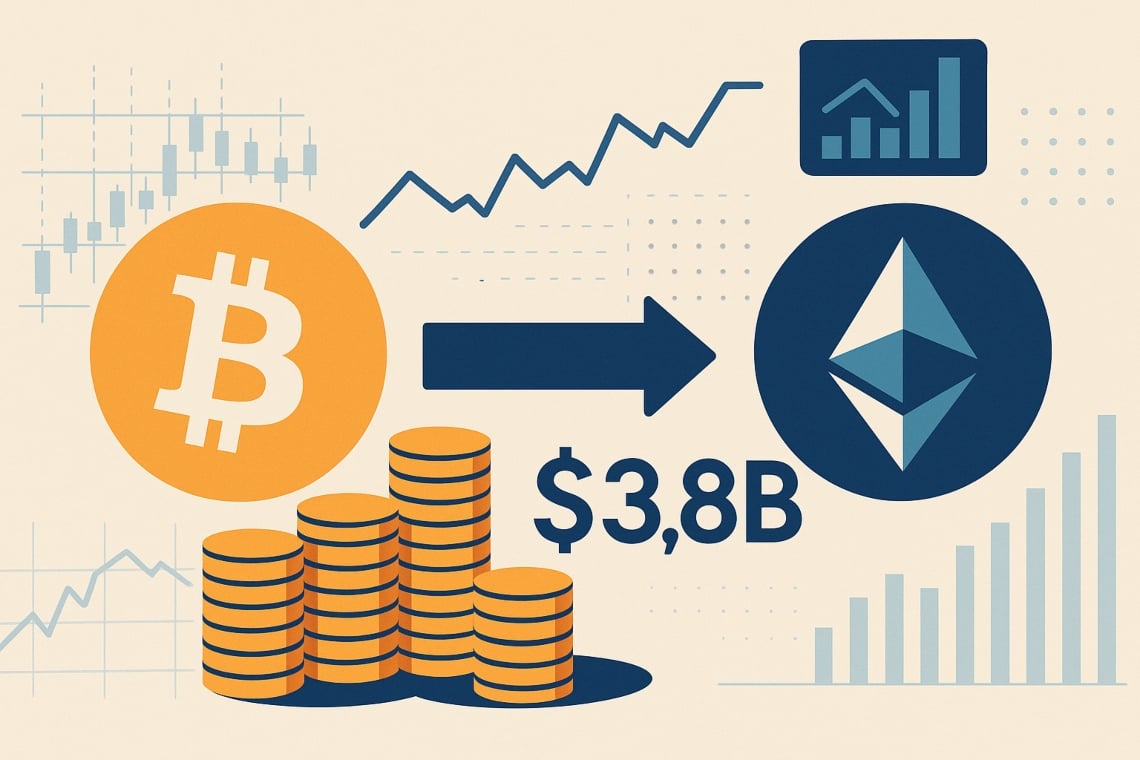The money was funneled through partnerships with Mexican cartels and linked to schemes ranging from drug trafficking to $53.7 billion in suspicious real estate deals. Despite this, crypto faces disproportionate scrutiny from lawmakers like Elizabeth Warren, even though illicit crypto activity accounts for less than 1% of transactions. At the same time, the CFTC is rolling out Nasdaq’s surveillance technology to monitor insider trading and manipulation in crypto markets, while the Treasury explores identity-embedded smart contracts in DeFi. Supporters say these measures protect markets, but critics warn they risk undermining decentralization and creating a digital surveillance state.
Banks Exposed But Crypto in the Crosshairs
A new report from the US Financial Crimes Enforcement Network (FinCEN) revealed that American banks were responsible for laundering an estimated $312 billion for Chinese money laundering networks between 2020 and 2024. The advisory was released on Thursday, and it analyzed more than 137,000 Bank Secrecy Act reports covering the four-year period and found that an average of over $62 billion per year flowed through the US banking system from Chinese criminal organizations.
These networks have become closely intertwined with Mexico-based drug cartels, and they formed a mutually beneficial relationship: cartels need to clean their US dollar drug proceeds, while Chinese gangs seek access to US dollars to evade China’s strict currency controls.
According to FinCEN Director Andrea Gacki, these networks are not only laundering drug money but are also deeply involved in a range of other criminal schemes, including human trafficking, healthcare fraud, elder abuse, and smuggling. They have also been linked to suspicious real estate transactions worth $53.7 billion. This scale of illicit activity proves just how traditional banking systems are still at the heart of global money laundering operations as they provide a shadow financial infrastructure that organized crime syndicates exploit worldwide.
FinCEN advisory
Despite these revelations, cryptocurrencies have been unfairly targeted as a primary enabler of money laundering. Politicians like Elizabeth Warren repeatedly pushed for stricter regulations on crypto by claiming bad actors are increasingly using digital assets for illicit purposes.
However, the numbers suggest a different reality. While the United Nations Office on Drugs and Crime estimates that more than $2 trillion is laundered globally every year, the entire crypto sector’s illicit volumes totaled just $189 billion over the past five years, according to Chainalysis. This figure is less than 1% of total crypto activity. A similar conclusion was reached by TRM Labs’ Angela Ang, who pointed out that FinCEN’s findings shed some light on how entrenched and expansive underground banking networks are compared to the relatively minor role of crypto in global money laundering.
The report offers a stark reminder that while crypto often faces political scrutiny, the bulk of illicit financial activity continues to thrive in traditional banking systems.
CFTC Taps Nasdaq to Watch Crypto Markets
Regulators are also making it a top priority to make crypto safer. The Commodity Futures Trading Commission (CFTC) is adopting a new financial surveillance tool that was developed by Nasdaq to replace its outdated 1990s-era infrastructure.
The system is designed to detect market abuse like insider trading and manipulation, and will also be applied to cryptocurrency markets. Tony Sio, Nasdaq’s head of regulatory strategy and innovation, explained that the software relies on tailored algorithms that can spot patterns specific to digital asset markets. It offers real-time analysis of order book data across crypto trading venues and provides cross-market analytics that link activities between traditional and digital asset markets. The CFTC will feed the system data gathered through its regulatory authority to improve oversight and enforcement.
Announcement from the CFTC
Supporters argue that tools like these are vital to preventing financial crime and ensuring the integrity of markets. On the other hand, critics warn that they risk creating a digital surveillance state. Privacy advocates in the crypto industry caution that such measures could undermine the open, permissionless nature of blockchain-based finance.
Concerns are especially pronounced in the decentralized finance (DeFi) sector, where the US Treasury Department is considering requiring embedded digital identification checks in smart contracts as part of new anti-money laundering measures. The proposal follows directives in the White House’s July crypto report, which called for stronger tax enforcement, revised market structures, and new identity standards. Among the recommendations were updated Know Your Customer rules for digital assets, as well as revisions to existing National Institute of Standards and Technology (NIST) digital identity guidelines.
Recommendations from the White House report
These potential requirements attracted criticism from people in the industry who believe they could fundamentally alter DeFi. Mamadou Kwidjim Toure, CEO of investment platform Ubuntu Tribe, believes that embedding government-approved identity credentials into decentralized protocols will erode the neutrality and openness that define them.
Source: https://coinpaper.com/10784/us-banks-laundered-312-b-but-crypto-gets-the-blame

